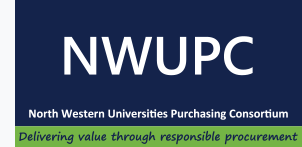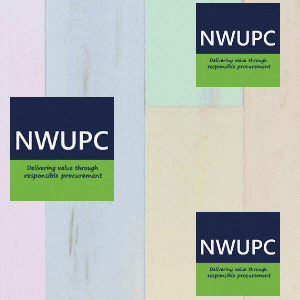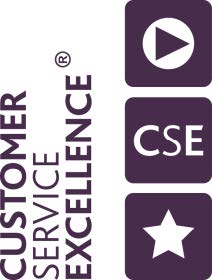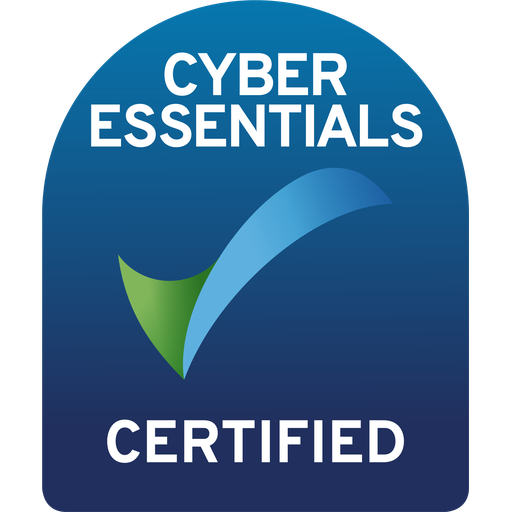Advancing the Circular Economy: A University Perspective - UKUPC Webinar
Hosted by Dr Rhiannon Hunt, Circular Economy Manager at the University of Liverpool, this was an opportunity for UKUPC Members to expand their knowledge of the circular economy and discover how universities can lead the way in sustainability initiatives. Discovering the myriad of advantages of adopting a circular economy approach within a university setting and learn how it can enhance resource efficiency, maximise the utility of existing assets, drive business model innovation, and transform waste into valuable resources.
- Introduction to the circular economy and supply chains
- Benefits of adopting the circular economy approach in universities
- Experiences from the University of Liverpool
- The unique role of universities
- Q&A Session
Slides from the session can be found further down this page.
Questions 1-10 can be found from 46 minutes and 30 seconds of the recording.
- Question from Amy at the University of Liverpool - What would you say is the biggest barrier to introducing a fully embedded end to end circular economy across an entire institution, rather than a specific category?
Adopting a circular economy requires a systems perspective and collaboration to ensure resources are effectively reused, maintained and circulated. As such, one of the most significant challenges faced when implementing institution-wide initiatives across such a large organisation is breaking down siloes. Regular engagement with a wide range of stakeholders is therefore essential. Universities are also quite unique in terms of their scale and the scope of different processes and activities, which adds to the complexity. Starting with a pilot and scaling solutions can help to rapidly identify and address any challenges whilst still at a manageable scale.
- Question from Craig of the National Nuclear Laboratory - How can economic growth be achieved whilst increasing sustainability if consumption is the main driver of growth?
Circular economy aims to decouple economic growth from the consumption and throughput of resources. The same or increased value and utility can be provided to end users with circular products (e.g. repaired and refurbished products or access business models), generating economic growth.
- Question from Ollie of the University of Brighton - If there are any, could you describe your best quick win approaches to demonstrating impact on the circular economy?
In order to demonstrate the impacts of a circular economy, it’s important to capture baseline data. This enables achievements to be quantified and evidenced effectively. It’s also important to monitor and highlight impacts that go beyond environmental sustainability, such as financial savings, efficiency improvements and social value, as these will resonate with a wider range of stakeholders. Presenting impacts as case studies can help those without prior knowledge of a circular economy to better relate to initiatives, as it translates quite a conceptual term into concrete, actionable steps that they can take within their own day-to-day activities.
- Question from Giorgia of Cardiff University - If leasing until end of life, what benefits could this bring as the machines would be decommissioned so reuse wouldn't be possible?
Typically, at end of life (or when no longer required) the product would be returned to the supplier or service provider. This means that you only pay for what you need. As suppliers receive the end of life products, this opens up opportunities for repair, remanufacture and recycling, owing to economies of scale in terms of having many of the same product/s returning to them.
Leasing can also help to incentivise the design and manufacture of durable, long-lasting products, as it’s in the leasing company’s interest to keep the product working for longer - they make their money from the product being in use. Where a company makes money from one-off sales of products, planned obsolescence may be incentivised, as this means customers will need to replace (and purchase) products more frequently.
- Question from Dave of NWUPC – he can see you have had some fantastic successes but have there been any projects that were embarked upon that didn't work quite so well?
Not abandoned entirely, however, an adaptive and iterative approach has certainly been required to ensure that circular economy initiatives can be effectively integrated alongside wider systems, processes and priorities. This has added significant time to projects, however effective engagement with stakeholders and a degree of flexibility are necessary for a successful outcome.
- Follow on from Dave at NWUPC- How are the results of these successful projects communicated and are there different messages to different stakeholders?
We have a number of channels for communicating circular economy initiatives, progress and success stories. These are both external, i.e. a dedicated Sustainability website, social media channels (X, Facebook, LinkedIn), awareness raising events, conferences and webinars, and internal, i.e. intranet pages, Teams channels, workshops, lunch and learn sessions, and physical media (digital screens).
For effective engagement, we try to focus on tangible actions that staff and students can take or behaviours they can adopt. We also raise awareness of how circular solutions can help achieve other targets, such as cost savings, improved efficiency, reduced administrative burden and legislative compliance. Including case studies can also aid in quantifying benefits and providing clarity on otherwise abstract concepts.
- Question from Howard of the University of Plymouth - Have you had much uptake from the local VCSE community after expanding access to the Warp-It platform? If so, what has proved useful/popular?
We’re still in the early stages of Warp-It rollout and have engaged with local partners via the platform, with a view to developing relationships further as uptake increases. Including clear guidance for staff listing items as part of the platform’s customisation is also useful for raising awareness of the option to donate furniture that isn’t claimed after a certain period of time.
- Katherine from LJMU - Do you have one or a group of team member who manages the furniture through Warp It? We would like to get on board with something like this but think it could be quite resource heavy
A key benefit of using platforms, such as Warp It, is that they decentralise the listing and claiming of items, similarly to other online marketplaces, so the majority of activity is carried out by individuals. This significantly reduces the administrative burden on any one team. Having said this, I am currently leading on the implementation of the platform and working closely with a range of stakeholders involved in the delivery of complementary services, such as Legal, Transport, Building Management, IT etc. There are setting-up and troubleshooting elements that require dedicated time.
- Question from Jackie from Queen's University Belfast - How is AI being used to estimate Scope 3 emissions?
Outsourced AI solutions can be used as a tool to derive supply chain Scope 3 insights from spend data. Accounting software is not yet at a stage where this is a built-in feature and the time it would take to manually analyse spend data at a product or even supplier level in such a large organisation is significantly greater than what can be achieved using AI in a much shorter period.
- Question from Sion of the University of Edinburgh - who is responsible for the asset management database, in particular for ensuring it is up-to-date?
This is a project being led by our Strategic Change team, who are establishing key roles and responsibilities within individual faculties for the management and maintenance of information. Again, this decentralisation limits the administrative burden on any individual or team.
- Question from Alison, The University of Manchester - Departments working in their own way is a problem with our university - can you say how you overcome some of these barriers?
- Engagement
- Providing services rather than adding requirements, which can be open to interpretation – making it the easy option
- Effective communication and training where required
- Celebrating and thanking teams for their contribution
- Sharing case studies
- Question from Megan of the Royal College of Art - Thank you Rhiannon! How do you communicate goals and principles for sustainability vs circular economy? They have similar and overlapping goals, so how can you avoid confusion or eco overload?
I would explain the difference between Sustainability and Circular Economy, as if Sustainability/Sustainable Development (i.e. meeting current needs without limiting our ability to meet future needs) is the goal, then a Circular Economy is a model for achieving this.
Within our organisation, circular economy sits within environmental sustainability and the two are closely aligned.
- Question from Giorgia at Cardiff University – related to question 4 - Sorry just to add to the leasing aspect as I don't think my question came across as I was meaning, how would the university encourage the company to use circular economy rather than just recycling if leasing, thus leading to benefits to the wider supply chain/world rather than just benefitting the university and what would those wider benefits be?
In terms of benefits for the leasing company, selling a ‘product-as-a-service’ can help to open up opportunities for new revenue streams, such as servicing, maintenance and repair. They may also be able to offer customers greater flexibility over their competitors who operate a standard retail model, through take back and re-issue of different products to meet customers’ changing needs. Additionally, there are opportunities for developing closer relationships with customers through increased interaction over a period of time, fostering loyalty.
- 2nd question from Giorgia - Would it be possible to share the document that includes suggestions of circular economy questions to ask?
Yes, please email Rhiannon for a copy - rhiannon.hunt@liverpool.ac.uk.
- Question from Jade of Fife College - Thank you, this has been really helpful. Do you implement a minimum or recommended weighting on Sustainability questions within Procurement documentation to ensure Sustainability is a key part of the evaluation process?
Yes, though the questions asked and weightings differ from tender to tender and also depend on whether a framework is being applied. For non-negotiable sustainability or circularity requirements, it’s possible to include details within the specification (e.g. ‘plastic-free’ or ‘take-back scheme provided’).
If you have any feedback or suggestions for future webinars or topics of interest, please do not hesitate to reach out to me. We greatly value your input and are always looking for ways to enhance our offerings.
Rhiannon has advised she would be happy to be contacted to discuss future opportunities for universities to share best practice in the circular economy. Dr Rhiannon Hunt, Circular Economy Manager at the University of Liverpool - rhiannon.hunt@liverpool.ac.uk.
Slides from the session






